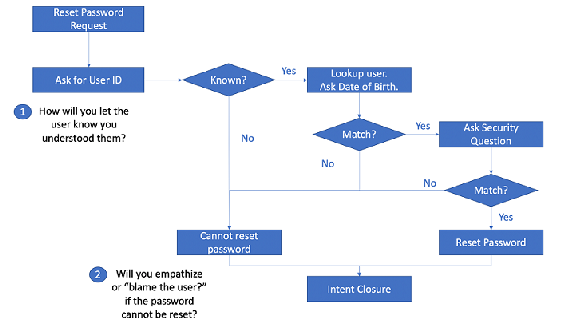4 Designing effective dialog
In this chapter, you will learn:
- How to write dialog supporting your process flows
- How to write dialog with tone, empathy, and variety
- How to keep dialog on track without being rude, to increase your chances of a successful process flow
- How to ask questions that increase your chances of getting a useful response
- How to respond to conversational mishaps, which may result in a communications transfer to a human agent
In the previous chapter, you learned how to design effective processes that your virtual assistant will implement. After you design all the flow charts and user-to-system interactions, you need to breathe life into them by writing the actual dialog text your assistant will read or speak.
Figure 4.1 Motivating example for the chapter. This is a good process flow, but what will the assistant actually say at each of these prompts? How can we prime users to answer questions in a way that moves us through this process? What tone will the assistant use at each prompt?
